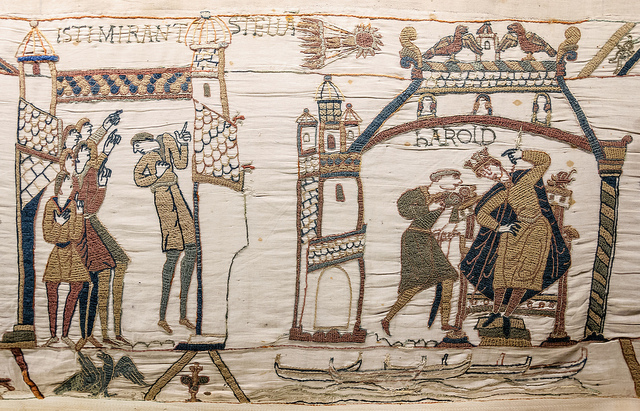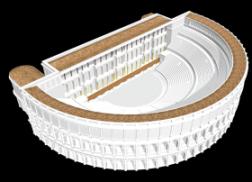Dr David Stack is a Reader in History who believes strongly in the need to promote interdisciplinary understanding and public engagement with history. His research interests include the inter-relationship of ideas (especially ‘scientific’ and medical ideas) and politics in the history of Britain and beyond, and Victorian autobiographies and their authors.
David will be presenting at the ‘Cultivating common ground: biology and the humanities’, an AHRC-funded workshop that will be held at the University of Reading, 18 July 2012. For more information follow the link: http://reading.ac.uk/cultivating-common-ground/
For many years I was reluctant to admit to strangers that I was a historian. This made getting a haircut a frequent source of torment: “Not working today?” the barber would ask. “No,” I’d reply in the forlorn hope of closing down the conversation. “What do you do then?” [Pause] “Erm …”. At this point, if feeling particularly adventurous, I’d ‘borrow’ an occupation from a friend or relation. The tangled web that ensued, however, was never, as Walter Scott warned, worth the trouble. (I still have nightmares about the time I found myself in a shop basement staring at an electricity meter and intoning, with as much authority as I could muster: “Yes, that’s working perfectly.”)
 An honest answer, however, often brought its own difficulties, especially if someone asked what the book I was working on was about. For a few years the simplest answer to this question was ‘phrenology’. Most people understood the term – “Bumps on the head, isn’t it?” – but few could fathom why anyone would spend their time researching it. “So, is there any truth in it?” I was asked on more than one occasion (and not just by barbers, who might be expected to have had a better idea than most).
An honest answer, however, often brought its own difficulties, especially if someone asked what the book I was working on was about. For a few years the simplest answer to this question was ‘phrenology’. Most people understood the term – “Bumps on the head, isn’t it?” – but few could fathom why anyone would spend their time researching it. “So, is there any truth in it?” I was asked on more than one occasion (and not just by barbers, who might be expected to have had a better idea than most).
Implicit in the question, I’ve always felt, was a dual assumption: that the world (and the past) is neatly divided into the ‘true’ and ‘untrue’, and that the latter is useless and thus not worth bothering with. If one holds to this view, that ‘truth’ and ‘utility’ are the only guides to what is worth studying, historians really should be embarrassed about avowing their vocation, and not only to barbers but more especially to university administrators and government ministers (in the unlikely event that they deign to ask). For one of the key tasks of historians, and historians of science more than most, is precisely the study of what is ‘wrong’ and ‘useless’. Just after the Second World War the medical historian Walter Pagel (1898-1983), published a short manifesto for this activity. He called it ‘the vindication of rubbish’.
Pagel’s approach was the antithesis of what we might call popular histories of science. In these accounts, often written by scientists themselves, knowledge is marching ever onwards in a straight line, with each generation (to mix our metaphors) standing on the shoulders of earlier giants, in their progress towards a more truthful understanding. Oddities, such as phrenology, take their place in such accounts, but only as party-pieces to be laughed at and thus confirm our own superior understanding. Pagel, by contrast, coined his phrase while exploring the relationship between alchemy and naturalism in the Renaissance. Rather than dismiss such ‘non-progressive’ elements in the history of science, Pagel argued that an understanding of alchemy and magic was essential to understanding Renaissance medicine and chemistry.
The justification for studying phrenology was slightly different. What interested me (and earlier historians) was the manner in which phrenology’s model of the brain – especially the notion of cognitive localization – mapped onto broader social and economic changes in Victorian society, and how this related to its success and popularity. In part, what we argued was that phrenology is a good example of how the success of a science is determined less by its inherent (or ahistorical) ‘truth’, and more by its explanatory power in a definite set of social relations. Phrenology’s theory of the brain, and thus human nature, that is, was popular because it was compatible with the new industrial capitalist economy and the values of free market economics. A study of phrenology, therefore, both aids our understanding of Victorian Britain and provides a historical perspective through which to view contemporary claims about the modularity of the mind, in neuroethics and brain imaging, which have been labelled the ‘new phrenology’.
Underlying my work, and that of other historians of science, are two assumptions that, I suspect, practising scientists will find uncomfortable. The first is that the distinction between ‘science’ and ‘pseudo-science’, associated with the philosopher Karl Popper, is unhelpful and invalid. Alchemy, phrenology, magic, and a host of other oddities all deserve to be taken seriously in the history of science. Second, that the ‘realist’ assumption that we should unquestioningly accept today’s science as ‘objective’ and ‘true’ is unsustainable in the face of historical evidence. There are so many cases of theories that were empirically successful in their own day but are now believed false – one historian (Larry Laudan) listed 30 in a range of different disciplines and eras – that there seem good grounds for assuming the historical contingency of any scientific ‘truth’. The atomic theory of matter, after all, could go the same way as phlogiston (the non-existent chemical thought to be released during combustion, prior to the discovery of oxygen) theory.
These, I concede, are difficult and contentious topics that cut to the heart of both the self-image of science and the work of humanities scholars. They are not, perhaps, suitable topics for the barber’s chair but they will, I hope, form part of our discussions at the Cultivating Common Ground workshop. And if biologists prove no more receptive to my ideas than barbers, I am well practised in steering the conversation around to where I’m planning to spend my holidays.
http://www.reading.ac.uk/history/hist-home.aspx





